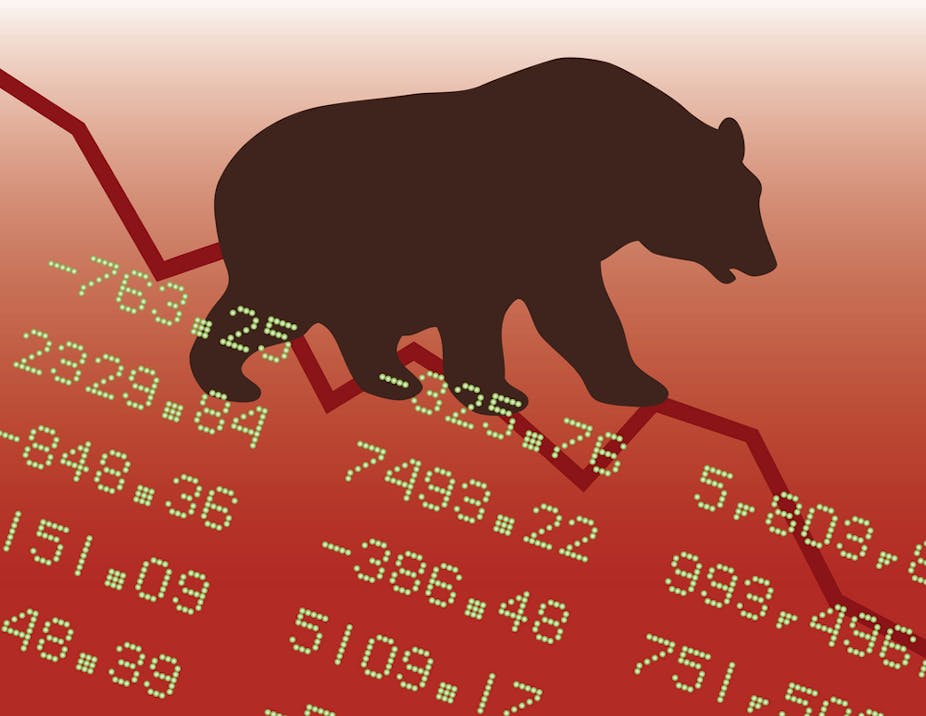Short sellers are often portrayed by the media to be the villains of the financial markets. They are usually presented as evil traders that drive down the prices of good companies. However, the academic research on short selling typically provides evidence more consistent with them being heroes. They identify over-valued companies and help restore more accurate prices. They also provide liquidity to the market.
Recent regulations that banned short selling have been shown to have a detrimental rather than beneficial impact on markets.
What is short selling?
Short selling means that you are selling something that you do not own. Most people struggle to understand how this is possible or why it is allowed. A short seller will sell a stock if they believe the price of the stock is going to decline in the future. Therefore, they sell at a high price in the hope of buying the stock back when the price declines.
In order to short sell, the seller must borrow the stock from someone who owns it. In return, the short seller pays a fee to the party lending them the stock. In addition, if the price of the stock rises after the short seller sells the stock, they will also be required to pay a margin to cover the potential loss of the short seller being required to buy the stock back at a higher price. When the short seller buys back the stock, the stock loan is terminated. The short seller’s profit or loss is the difference between the sale price and the purchase price.
Short selling is more risky than buying a stock because the potential losses are unlimited. When someone buys a stock, the maximum amount that they can lose is the price they paid for the stock. When someone short sells a stock, they lose more as the price of the stock rises.
How common is short selling?
Short selling is common. In the US equity market, short selling accounts for approximately 40% of the dollar value traded. In Australia, the level of short selling is considerably lower at around 13% of the dollar value traded.
Since the financial crisis, the Australian regulators have introduced a comprehensive disclosure regime for short selling. This regime makes it easy for market participants to identify the outstanding short positions and the level of shorting activity in the market. Short positions must be reported to ASIC on a daily basis. ASIC aggregates this information and reports a daily aggregate level of short positions outstanding to the market. In addition, the level of short selling activity must be reported to the Australian Securities Exchange (ASX) on a daily basis. ASX aggregates this information and reports the aggregate daily level of short selling in each stock to the market.
What can we learn from short sellers?
High levels of short selling in a particular stock suggest that the market perceives that stock to be overvalued. Academic research in the US has shown that short sellers are informed investors. Heavily shorted stocks underperform lightly shorted stocks by approximately 15% per annum.
This evidence suggests that short sellers are skilled at identifying overvalued stocks and that on average they are able to profit from taking a short position in these stocks.
Do short sellers provide any other benefits?
Short sellers also offer additional liquidity to the market. Recent academic research in the US market has shown that some short sellers act as liquidity providers – stepping into the market to provide liquidity when the cost of liquidity is high. A study by an Australian fund manager suggests that short sellers are also significant liquidity providers in the Australian market. This study showed that the ban on short selling by Australian regulators during the financial crisis resulted in significant reductions in liquidity.
But can’t short sellers manipulate the market?
Some investors and companies raise concerns about short sellers manipulating stock prices down in order to profit on their short position. Oddly, people seem to be less concerned about the price of a stock being manipulated upwards by someone with a long position in a stock. Regulatory attention should focus on detecting and prosecuting manipulative trading regardless of whether the manipulator is pushing the price of the stock up or down or whether the manipulator is a long or a short seller.

